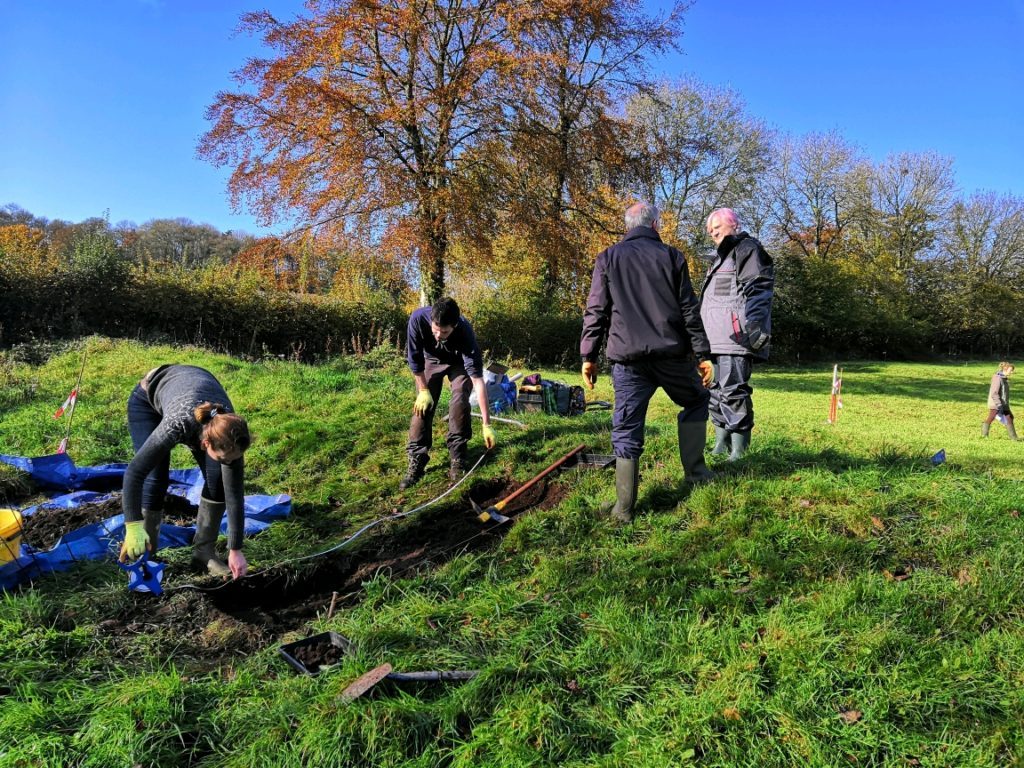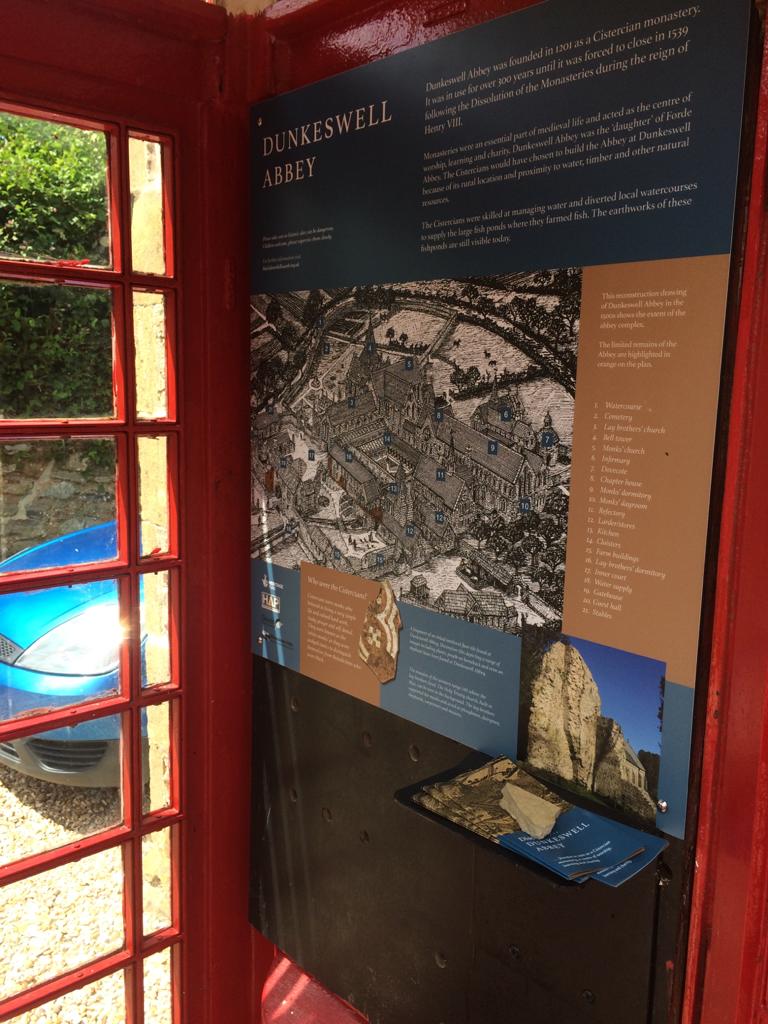Roman ironworking site discovered at Dunkeswell Abbey
Discoveries at Dunkeswell Abbey
Dunkeswell Abbey was a Cistercian abbey complex, founded in 1201, and was in occupation until its dissolution in 1539. The Cistercians would have made the choice to build their abbey at Dunkeswell because of its rural location and proximity to water, timber and other natural resources. A major strand of the Discovering Dunkeswell Abbey project was to extend the existing body of knowledge of the Abbey and its history, while also involving the local community.

Initial test pit layout and topsoil removal. Photo: Heritage Arts People
In June 2019, prior to the test-pit excavation, Heritage Arts People organised a river-walking survey near Dunkeswell Abbey, as part of the community archaeology programme. The discovery of tile wasters revealed completely new evidence for the production of plain peg-tiles (used in roofing) on the site. This discovery supported emerging evidence that the parishes around Dunkeswell supported a major ceramics industry in the medieval period and in the 16th century. Since the test pits would be targeting an area of suspected iron working activity, the team wondered whether evidence of another industry – medieval iron working – might also be discovered.

Excavation of the test pit. Photo: Heritage Arts People
The two test pits were excavated in November 2019, about 250m west of the Abbey, in an area identified as a possible furnace/extractive site, targeting a linear earthwork and putative slag deposit. The excavation revealed large quantities of dumped metal-working waste: iron smelting slag, fragments of clay furnace lining and possible iron ore. The possible in-situ remains of a clay structure and potentially a smithing hearth bottom, were also discovered, suggesting on site iron working and production.
A sample taken from a sealed burnt layer had the potential for radiocarbon dating. So, with a grant from Blackdown Hills Area of Outstanding Natural Beauty, the material was processed and a radiocarbon date obtained. The radiocarbon determination for charcoal recovered from the sample returned a date in the late Roman Period (230-380AD). This is considerably earlier than had been anticipated and is broadly contemporary with Roman iron-working deposits recorded at Bywood Farm, located 3km to the southeast. The presence of a possible Roman quern stone is suggestive of additional associated settlement activity in the vicinity of the site.
Whilst the test pit did not provide a date for medieval iron working activity, the fact that late Roman iron working activity was taking place on the site was a very exciting discovery. Radiocarbon dates in the Early Medieval period have also been returned from metal working residues at Bywood Farm, so we know that there was also medieval iron working activity in the area. The test-pit investigation was small scale but very worthwhile and has highlighted the considerable potential for further investigation.
Interested in visiting?
Find out more about visiting the remains of Dunkeswell Abbey
The display in the red phone box at Dunkeswell Abbey is now up! Here’s Catherine from Heritage Arts People, giving you a preview of the display. There are also some leaflets available for people to take away.
The red telephone box is located in the small car parking area next to Dunkeswell Abbey. The interpretation board and leaflets were produced and paid for as part of Discovering Dunkeswell Abbey, a National Lottery Heritage Fund project.

Dunkeswell Abbey interpretation board, showing a reconstruction drawing of the Dunkeswell Abbey. Photo: Heritage Arts People





